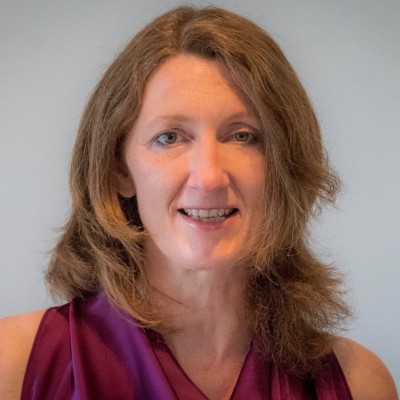August 14, 2025
CXM Talks to Michelle Ansell About Leadership Recruitment in the CX, DEI and AI Era

Michelle Ansell has hired more leaders than CXM has had corporate-branded pens and notebooks, making her the ideal person to ask about the changing recruitment landscape at the highest tiers of business and recruiting for the top jobs. We had the pleasure of hearing from Michelle about what makes a great leader, how boards are reacting to the challenges of the shifting business environment below them, and how potential leaders can position themselves to stand out.
In a paragraph or two, how do you do what you do?
At Douglas Jackson, we help ambitious, growth orientated, customer led organisations hire more diverse, impactful leaders who transform performance and help them move forwards when they have a critical challenge. We don’t just fill roles, we help boards and senior leaders make one of their most important decisions: Who to trust with their vision, their people, and their growth.
How do we do it? I am not sure who said it first, but Stephen Covey said seek first to understand. It is about truly understanding a business’s culture, ambition, and challenges, then identifying leaders who will not just fit, but who will stretch the organisation to achieve more. With time, commitment and dedication, every search is tailored, every introduction is qualified and benchmarked and our goal is always the same: to achieve the right outcomes for the client and individual, appointing more impactful, diverse leaders who stay longer and perform better.
Applying for jobs and recruiting at the entry/professional level is terrifying right now thanks to AI/automation. What’s it like at the executive career level?
At the executive level, it’s a different landscape, but the pressure is just as real. The market is tighter, expectations are higher, and boards are more cautious. They’re not hiring to ‘try someone out’ they’re looking for leaders who can de-risk transformation, protect resilience, and accelerate growth. AI and automation aren’t replacing executive roles, but they are changing the profile of what great leadership looks like, data fluency, adaptability, and the ability to lead through uncertainty are now non-negotiable.
From a talent acquisition process, given the tools available to help applicants effortlessly apply and tailor CV’s and resumes using AI, it is extremely hard for employers to find ‘the great’ amongst a sea of applications that all look good, yet when they turn up for interview, so much is lacking. We are seeing roles have to come back to market, costing, Ex-COs time, money and reputation.
Organisations are leaning in to AI to help them screen but again at this time, that can be more perilous as many individuals who might be a fantastic hire are not making the cut. Executive level hiring still very much needs the personal touch and that of an experienced, steady hand to identify the best hires and ensure they stay the course for your process and potential offer.
When finding candidates, what are your deep dive superpowers?
Curiosity, context and keeping an open mind. We go beyond the CV and the LinkedIn profile. Given our two decades of experience supporting organisations across markets and industry we already know what good looks like, and given we are continually talking and connecting with C-suite, Directors and SVP level individuals in Operations, CX, Customer and Transformation, we are continually benchmarking and learning. Often before we even reach out to talent we may have already worked with them, or, others who knew that individual, soft referencing, recommendations are all extremely important in our searches.
When it comes to the individual, we want to know what shaped someone’s leadership style, what drives them, and how they handle failure as much as success, how they delivered the change, or performance. We use a mix of research, network intelligence, and structured assessment to uncover both capability and character. And we never lose sight of cultural fit, the magic happens when a leader’s values and vision align with the business’s purpose and their peers.
What are the best or most dubious C-level CV claims you’ve seen? Anything shocking?
Thankfully nothing shocking on our watch, although we have seen the downfall, or failure of some very high profile C-suite and execs who continue to get hired by unsuspecting organisations. To your question though, one of my favourites is always how many people in the business will ‘claim’ a certain outcome, or achievement. Of course we know it is a team game and it takes a lot of levers to drive real systemic change and performance but some searches might mean we speak with more than one person in a business, it is always interesting to understand the part the individual actually played in the success beyond the claim of their CV.
Let’s just say that some played very little part at all, even I would say were barely even in the room! On the flip side, I’ve met leaders whose most defining achievements weren’t even on their CV, like the COO who rebuilt trust in a toxic culture and doubled retention, or who built a new pilot or digital applications worth £billions. The surprises are usually human, not headline-grabbing, resilience after a failure, or humility in success.
How have C-suite needs changed since COVID, especially for business transformation and CX?
Post-COVID, C-suite expect leaders to balance commercial growth and efficiencies. It dramatically accelerated pre-existing trends, fundamentally reshaping C-suite priorities around transformation and customer experience. Before the pandemic, digital transformation was a long-term goal; now, it’s an immediate necessity for survival and growth. Leaders are focused on rapid, agile digital initiatives that prioritise speed and efficiency, viewing technology as a strategic asset rather than just a cost.
Simultaneously, the definition of customer experience (CX) has expanded. It’s no longer just about external interactions; it’s also deeply tied to the employee experience (EX). When we look at valuable business changing transformations, data and data driven insights are needed to identify and measure the true value of these CX and transformation efforts and there’s a much greater appreciation for leaders who can navigate uncertainty and keep shareholders, stakeholders, employees and customers engaged during change.
Personal branding is key but what skills matter most for moving from manager to the C-suite?
At that transition point, it’s all about scale. Can you take what you’ve done brilliantly in your own team and replicate it across an organisation? Can you inspire confidence and clearly articulate your strategic thinking, financial acumen, and do you have the ability to influence at board level, these skills all become critical. And, perhaps most importantly, self-awareness knowing your strengths, your blind spots, and how to build the right team around you.
You do not need to know it all, too often Managers fail to make an impact as they remain in the weeds and focus too much on the day to day and detail.
How do you see C-suites evolving for remote/hybrid work, and the DEI pushback?
I think the best boards have moved past debating if hybrid works and are now focusing on how to make it work. The C-suite is evolving from a traditional, operationally focused leadership to a more productivity led, human-centric and resilient model. When it comes to hybrid work, leaders need to prioritise empathy and a focus on outcomes over physical presence. This requires new skills to foster trust and collaboration in a distributed environment, while also addressing the potential for bias against remote workers to ensure fairness in promotions and opportunities. At the same time, as some organisations pull back on DEI initiatives, many C-suite leaders are doubling down on their commitment, but with a new approach.
They’re moving away from a compliance, quota-driven model to one that is more intentional, purpose-driven and directly linked to business value. This involves articulating how DEI drives innovation and growth and better outcomes, and requires courageous leadership to champion inclusion as a core business strategy, using data to prove its impact to employees and stakeholders alike.
Our workforce is changing whether we like it or not, those who fail to embrace the change will find themselves fishing in an ever decreasing talent pool of what they think they need, over what could really drive a step change and initiatives that actually deliver performance, productivity and growth.
What’s the best advice you’ve given on a keynote or podcast?
Gosh I would hope I have given a few snippets that were good advice. Best…For employers I would say, hire for tomorrow, not today.
When we look at job descriptions and get bought in by the C-suite to help, all too often they are attempting to solve the problem in front of them, something they are stuck on, or haven’t yet been able to fix, but the leaders who create real value are the ones who can see the next wave of challenges and opportunities, they are solution focused and can fix the immediate issues but what next. If you’re only hiring for the here and now, you’re already behind.
For candidates, and I borrow this from an Impact Room interview with Bontle Senne who said it to me in one of our very early podcast episodes in our feature, ‘Is this true?’ All too often, leaders, future leaders, stand in their own way with a story they keep telling themselves, which could be born out of an upbringing, childhood, early experience…I can’t do that role because I don’t have, or I am not X. Stop and ask yourself is this really true, or is there a different narrative and do you already do it, or could you.
Leaders for startups vs mature companies, what’s different?
Startups need leaders who can wear multiple hats, thrive in ambiguity, and get their hands dirty. There’s less of a safety net, nowhere to hide, less process, people and more urgency.
They are also often founder led, working with a brilliant founder, who might not have all the understanding of how a scaling business should be structured, or how to get the best from people, process or technologies and who is used to doing what they want, when they want, can catch many successful corporate leaders out, there can also be limited funding available dependant on investment cycles.
In mature larger companies, you’re often looking for leaders who can navigate complexity, stakeholder politics, and scale transformation without breaking what already works. Understanding who has the power and how to influence in the right places to get the buy in and support to help you and the business achieve. The pace, risk appetite, and decision-making environment are very different.
What’s your advice for recruiters and HR to maintain the human touch without burning out?
Yes this is a good question, it is tough at the moment and there is so much demand on recruiters and HR with a lot of changes coming down the line. Commit to continual learning, advance your skills and understanding so you are always agile and can offer solutions and innovations.
Protect your time and your energy. Set boundaries around communication, use technology to handle the time consuming tasks like admin and scheduling, and focus your human energy, that personal touch where it makes the biggest impact, on listening, advising, and building trust with your stakeholders and networks. You can’t do your best, or give your best to others if you’re running on empty.
Are CX/EX hiring trends that show opportunity and progress?
We’re seeing more organisations shift their thinking on CX, they realise that CX isn’t just a ‘department’, it’s a strategic driver.
Hiring trends in CX and EX show a significant shift away from siloed roles to a more integrated and strategic approach. For a long time, CX was viewed primarily as customer service, and or, a more technical specialist function in design or insight, and EX was a function of HR. Now, the hiring market reflects the understanding that these two are deeply interconnected.
The opportunities and progress are evident in a few key areas. First, we’re seeing a high demand for a new kind of professional, one who can bridge the gap between human empathy and data-driven strategy. This means hiring for roles that require a blend of commercial and technical skills, like data analytics and AI proficiency, and soft skills, such as emotional intelligence, adaptability, and strategic communication.
Companies are actively seeking people who can not only manage a customer journey map but also understand the employee journey that enables it. Secondly, there is a clear trend toward roles that can work across departments.
Companies are creating new positions that focus on collaboration and breaking down internal silos. This is where the real progress is made, roles that combine customer, commercial, data, and digital insight are growing, and leaders who can bridge operational delivery with brand and employee experience are starting to get hired.
With a productivity problem and a leaner workforce, leaders and boards are understanding that engaged employees create engaged customers and better business outcomes.
CXM loves to talk to its audience, from leaders explaining how they make hotels more hospitable and personal to the driving CX forces behind the new JFK airport terminal. Get in touch if you have a story worth sharing.




